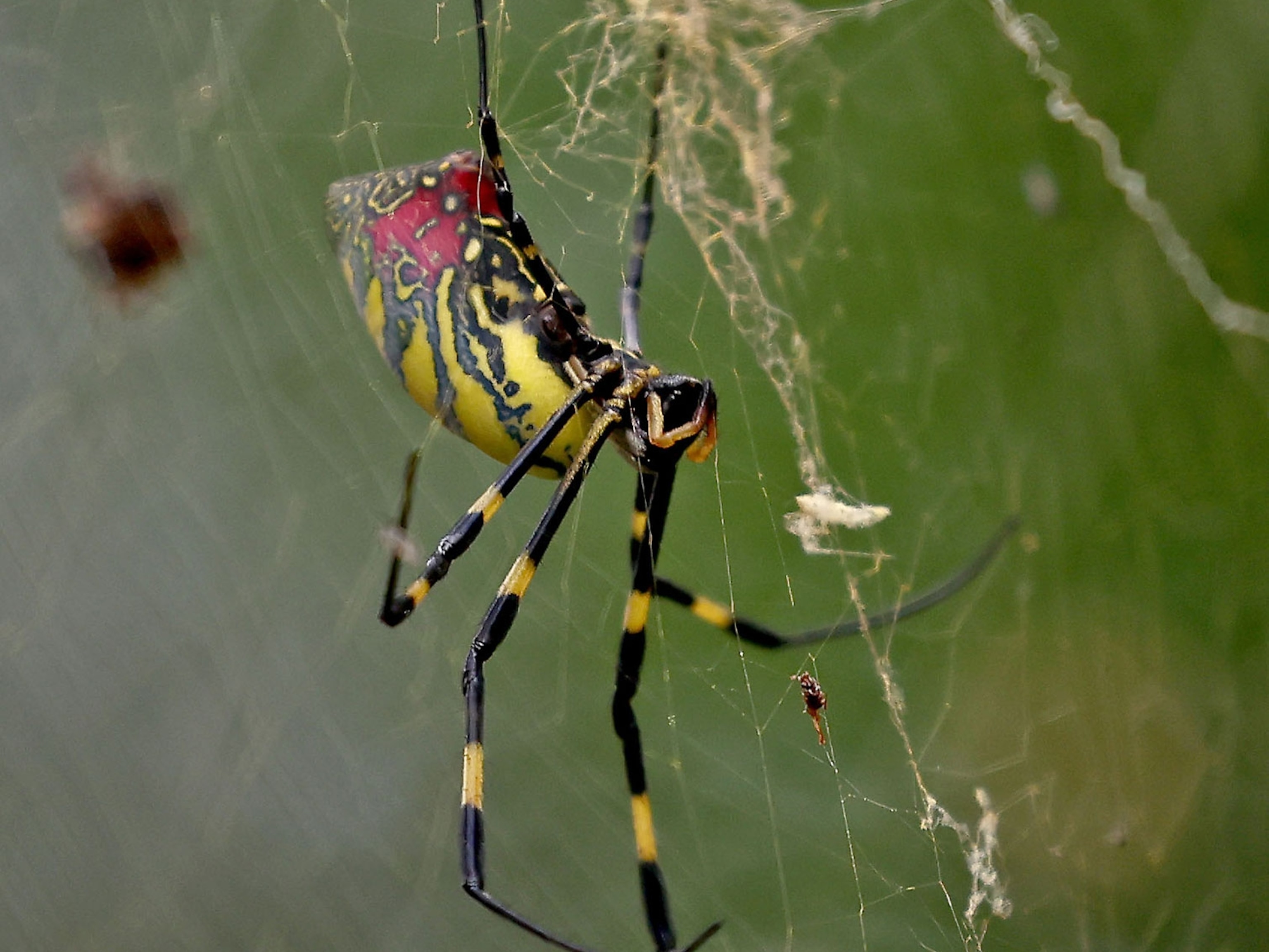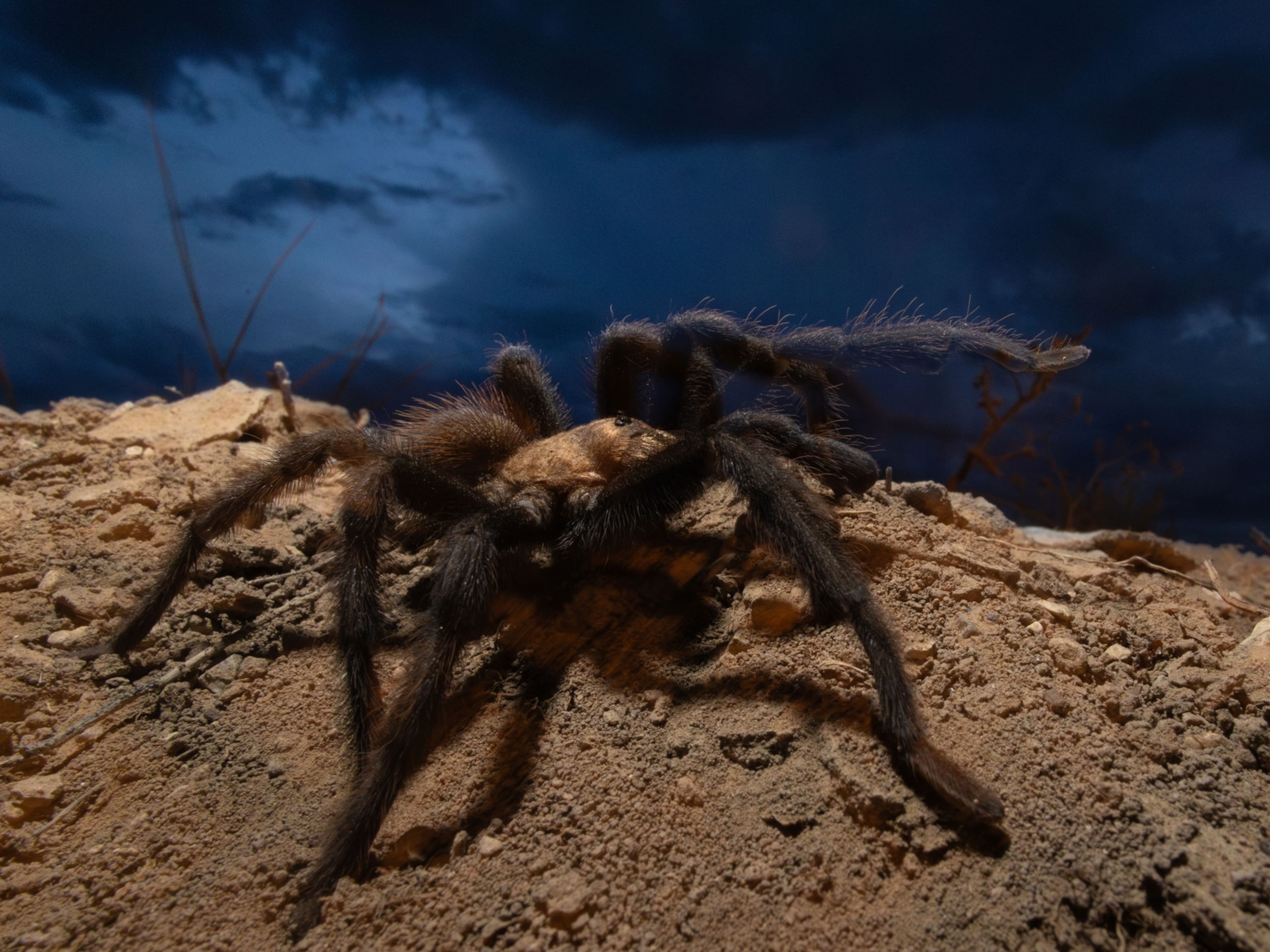
Are Dangerous Spiders Hiding in Your Fruit?
Probably not, says a new study that shows most hitchhiking arachnids are harmless.
Fruit shipped from afar sometimes arrives with an unwelcome bonus: a large, scary-looking spider.
The arachnids, which hide among bunches of bananas and other fruit shipped from South America to the United States and the United Kingdom, can frighten the daylights out of unsuspecting humans.
Reactions can be extreme: Schools have closed. Homes have been evacuated (again and again). Grocery stores have pulled whole shipments of produce, as occurred in Milwaukee, Wisconsin, in 2013.
This is because people can be quick to assume the stowaways are Brazilian wandering spiders, dangerous South American arachnids with a reputation for being fast, aggressive, and highly toxic (the name of their genus, Phoneutria, means murderess in Greek). (See "7 Bug and Spider Myths Squashed.")
Sometimes, that might be true. But often, the hitchhiking spiders are harmless—victims of a case of mistaken identity, says arachnologist Rick Vetter, now retired from the University of California, Riverside.
Suspecting that wandering spiders rarely go to North America in a fruit basket, Vetter set out in 2006 to determine which spiders are really bumming rides across the Equator.
He searched the scientific literature and asked a fruit importer to report any incidences of spiders turning up in shipments. Then he spent the next eight years identifying who the international stowaways actually were, results that will appear soon in the Journal of Medical Entomology.
In total, Vetter tallied 135 spider hitchhikers, only seven of which were Phoneutria.
National Geographic spoke with Vetter about the most common banana-riding spiders and why it's important to clear up these misconceptions.
Which spiders do you tend to see most commonly in fruit shipments coming to North America?
The main ones are the pantropical huntsman spiders (Heteropoda venatoria)—big, leggy beasts, very attractive—they're the ones with the white moustache. They're found all over the world in tropical areas. Ecuador is where they're coming from in bananas a lot. And the red-faced banana spider (Cupiennius chiapanensis).
How frequently will you find a spider falling out of your bananas?
We really didn't get that many. The most I got was 15 spiders in a year. And this is from somebody who's bringing international cargo into North America. But I only got about half the spiders that people contacted the fruit importer about. (Also see "Ask Your Weird Animal Questions: What Happens If You Swallow a Spider?")

What are the economic impacts of misidentifying spider species?
This has caused, and can cause, some severe economic situations. [Say] you've got $26,000 worth of bananas sitting on a ship because somebody has identified this thing as a deadly wandering spider. Or you have 20 truckloads of wicker furniture from Mexico that they are going to fumigate and then develop a personal-protection program for their employees.
So what my paper is doing is giving information to the entomologists and arachnologists so they can properly identify the spiders—and there's also information about how toxic these things are, and it should stop some of the insanity that goes on when people find a large spider in their fruits.
In terms of the spiders being found in fruit and the hyperbolic response to those discoveries, who do you think is most to blame for that? The people who are finding the spiders? The people who are misidentifying them?
It's a combination. Part of the problem is that these spiders are misidentified online. They'll have a picture that they say is a wandering spider, but it's a photo of the red-faced spider, which is harmless. (See a video of the world's biggest spider.)
And then there's the psychology: If there are two ways you can go with something—something that's harmless, or something that's potentially dangerous—people always go down the dangerous route. Which may be a survival instinct. Maybe it's better to take something as dangerous, even if it's harmless, than to figure it's harmless when it's dangerous.
Why do you think people choose the thing that is scary versus the thing that is not?
It's much more exciting to say, "I found a deadly, toxic spider!" than to say, "I found something that's harmless."
I was giving a talk and said to the audience, "If you get a bacterial infection, do you tell anyone about it? No. But if you think you have a brown recluse bite, you tell everybody! You put it in your Christmas letter." (See "Why Did Thousands of Venomous Spiders Swarm a House?")
After the talk, I was in the lobby, and a guy comes up and he says, "We thought my wife was bitten by a brown recluse ... and you're right, we did put it in our Christmas letter."
Follow Nadia Drake on Twitter.





